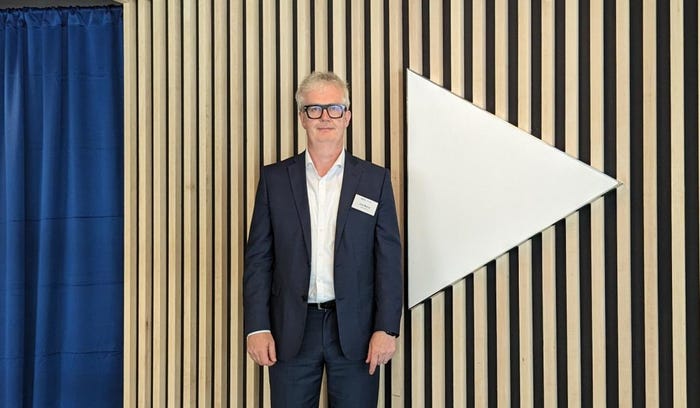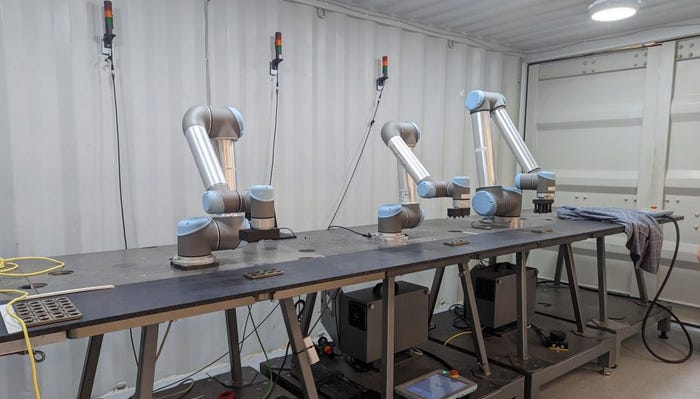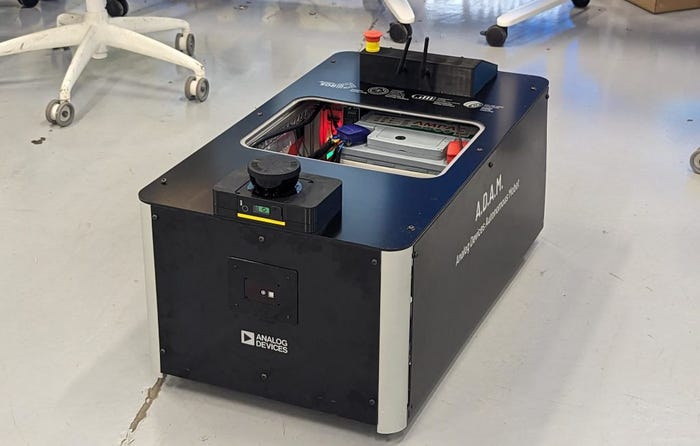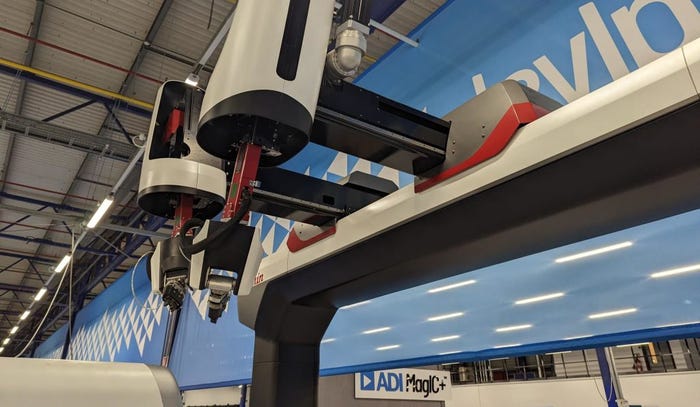Analog Devices says 6G will inherently be Open RAN from day oneAnalog Devices says 6G will inherently be Open RAN from day one
At its collaboration hub in Ireland, we spoke to semiconductor firm Analog Devices about its experience working with other firms in Open RAN deployments, and the push to ‘onshore’ chip building capabilities.
June 22, 2023

At its collaboration hub in Ireland, we spoke to semiconductor firm Analog Devices about its experience working with other firms in Open RAN deployments, and the push to ‘onshore’ chip building capabilities.
Analog Devices has operations in 31 countries, boasts 125K+ customers and an annual revenue of $12 Billion. It produces some of the key semiconductor and component tech that enables IoT and other network ecosystems, including analogue and mixed-signal, power management, radio frequency, and edge processors and sensors.
Earlier this year it announced it was ploughing €630 million into its European regional headquarters in the Raheen Business Park in Limerick, Ireland which will fund the construction of a state-of-the-art 45,000 square foot R&D and manufacturing facility.
At a tour of its Catalyst Centre, which serves as a collaboration hub and incubator for various types of connected tech, we were shown the fruits of various partnerships it has in all sorts of fields, such as automation and industrial asset health systems, industrial VR applications and ADAM – or Analog Devices Autonomous Mobot.
During which time we sat down with Joe Barry, Vice President Marketing, Systems & Technology, Communications Business Unit at Analog Devices (pictured below) to, talk about semiconductor onshoring, connected factories, and Open RAN.

You mentioned there’s been some investment and expansion in the facilities here, what is the ambition for Analog Devices in the next few years?
Obviously our strategy, our foundation is based on semiconductor capability. But it’s more and more now about [the] solution space and how we create solution. And one of the areas where we think we’re in a very strong position is we’re at the source of where that data is born. And I think we’re in a unique position to be really able to look at the data, interpret the data, make intelligent inference on the data, and you’re connected, securely, robustly. It’s what we call the intelligent edge strategy.
The edge can be a little bit confusing, because people think about clouds, fog and edge, but we describe it as the edge of the edge, it’s at that layer right up to where you need to connect. And there’s a layer of fragmented or distributed processing, where you need a certain amount of processing and intelligence at the edge. It’s not practical to bring everything back to the cloud and try and do it there in real time. So I think our focus in terms of the core technology, building up the domain expertise, focusing on the partnerships – because really the ecosystem partnerships really helped to drive solution based innovation.

What we’re seeing is bringing industry domestically back – onshoring capabilities. You need factories with very low labour, that’s the reality because taking the example in Europe, labour is scarce and costly. So that means very smart, intelligent factories. That’s just one example of where I think we’re seeing transitions and growth and the need for these types of solutions that we’re working on.
From my own personal perspective the connectivity side, which is where I spend most of my energies, is providing that glue that connects between all that sensing, measuring and interpreting, and then connecting it intelligently to a cloud or other sorts of downstream creativity.
In terms of the rise of IoT, presumably there’s going to be a need for more chip manufacturing capacity overall?
Yeah, if you look at both narrowband and wideband IoT… if we look at the forecasts it’s explosive in terms of number of nodes that will be connected, in the billions… that would be more connected things than humans. But within that there is a spectrum of needs, in terms of basic connectivity versus more kinds of advanced connectivity solutions. And [there is] a variety of solutions and players in that space, IoT is a very wide spectrum in terms of the needs versus who’s supplying those solutions.
And there’s been plenty of government initiatives in the EU in the US trying to encourage growth in domestic capacity.
In the US there’s the 5G Innovation Fund, which is very targeted at trying to drive domestically in the US its own capability, [there is a] similar effort in Europe. Because they want to control their own future. And there’s concerns around security and other reasons.
There’s lots of pots of money announced it sometimes hard to keep track of – what’s the process like for applying for some of it?
There was a first round of [the] 5G Innovation Fund in the US. We collaborated with a number of different companies putting in proposals, and the results aren’t out until the end of the year. That’s the first space, which is a very small, targeted piece of funding. It will come in different stages, they have built up a team of experts that will decide on how it gets disseminated. And same in Europe, there’s a similar type of funding structure. It’s just getting going, these things take time.

How much more self-sufficient will countries in the West be in a decade?
I think a decade would make a big difference in terms of building that self-sufficiency, it’s not going to happen in two or three years, it just it takes time. But I do see it happening in a decade. There’s a lot of momentum behind it now.
What has been your experience working with other players to get Open RAN off the ground?
We’ve gone through the hype cycle. I hate using these phrases but we’ve crossed the chasm in the sense that now it’s getting to a point where it’s really building momentum and being deployed at scale. I think you’re still going to see a mixed mode in 5G, but I think by the time we get to 6G I think it’ll inherently be Open RAN from day one.
That’s my sense on it, but the industry is making a lot of progress in deploying Open RAN at scale. And I think you look to certain operators that moved early, maybe it was easier because they had Greenfield deployments, and now you’re starting to see operators thinking about okay, brownfield, how do I to play around in that scenario. You have certain regions like India for example, were so many operators there will probably deploy Open RAN at a large scale for 5G over the next couple of years.
In Europe, Vodafone has been a strong advocate of Open RAN and some of the others as well. So there’s a lot of support, and I think the main motivation has been to drive innovation. The problem in any industry when you get to a very small supplier base, you can have a tendency to… maybe innovation doesn’t go quite as fast as you’d like it to. So their desire is to make it more vibrant, more robust longer term, and scaling to areas like enterprise and B2B opportunities. That’s that’s a big focus area for operators now.

Get the latest news straight to your inbox. Register for the Telecoms.com newsletter here.
About the Author
You May Also Like










.png?width=300&auto=webp&quality=80&disable=upscale)


_1.jpg?width=300&auto=webp&quality=80&disable=upscale)